Yes, you can sand granite to smooth rough edges or remove stains. Use diamond sandpaper for best results. However, it's essential to take precautions, wear safety gear, and follow proper techniques to avoid damage.
Delving into the world of home improvement, the question of whether you can sand granite has puzzled many DIY enthusiasts. Is it a feasible option or a risky endeavor? Join us on a journey to unravel the truth behind this common query. In this blog post, we'll explore the ins and outs of sanding granite, providing insights, tips, and the real-life experiences of users who dared to take on the challenge. Discover if transforming your granite surfaces is a triumph or a potential pitfall!
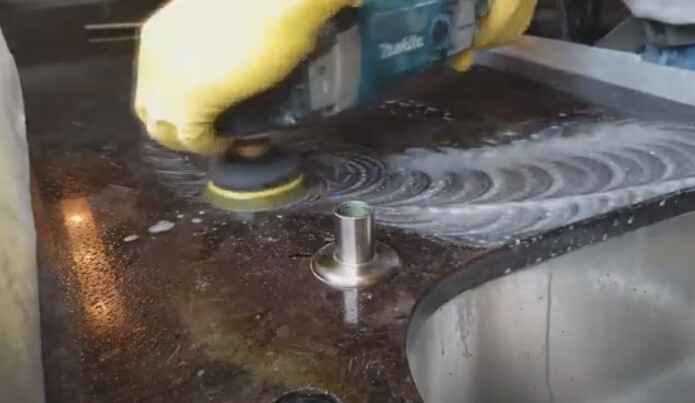
Granite is a tough, durable material – but that doesn't mean you can't sand it without damaging it. While the process may involve more than sanding other materials like wood or metal, you can safely sand granite correctly and carefully.
Are there any special techniques or tools that should be used for sanding granite?
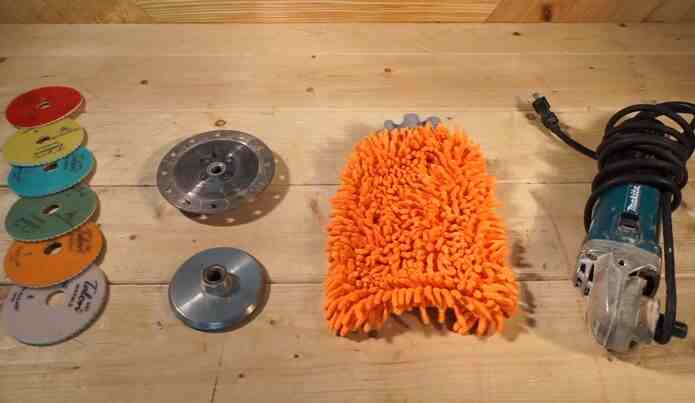
When sanding granite, you will want to use a few different techniques and tools. First and foremost, ensure you have the right type of grit for your project - this can range from course grits like 24 or 36-grit up to 400-grit, which is finer and more suited for polishing.
When using powered tools like grinders or sanders, ensure they have variable speed controls so you can adjust the power settings accordingly.
Additionally, wear proper safety equipment such as respirators and protective eye goggles when doing any sanding work with granite.
For hand-sanding operations, you'll need 120/220 sandpaper on a block or sheets, depending on your preference. Be sure to start with coarser grits, going from 24/36-grit to proceeding onward until achieving desired results with 220/400-grit, especially if planning to polish the surface afterward.
Make sure that during each stage, you pay close attention to grain pattern direction and keep a uniform pressure when operating both powered and manual tools for successful results in sanding granite!
How to sand granite?
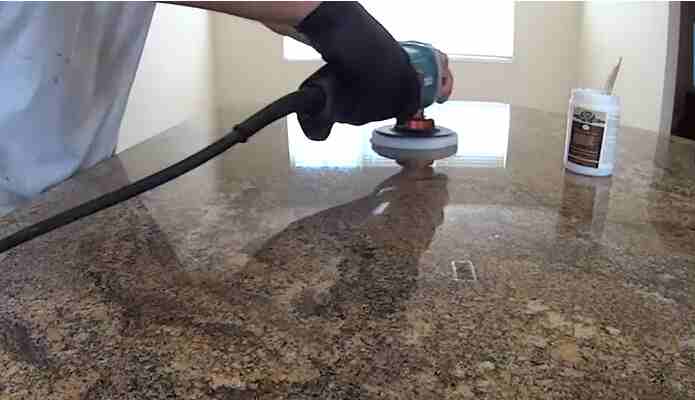
Sanding granite is essential in achieving a perfect finish when working with this material. While it may seem daunting to tackle, the process is straightforward as long as you have the right tools and techniques.
Start by preparing your work area - ensure that you wear safety glasses and gloves and that there is ample ventilation. Also, choose a well-lit spot to see what you are doing clearly.
Next, select the type of sandpaper you will use - this depends on how much material needs to be removed from the granite surface. For light sanding and smoothing, use fine-grit sandpaper (around 400-grit). For heavier sanding, medium-grit sandpaper (150 to 200-grit) can be used.
Once your tools and materials are ready, secure the granite, so it does not move during sanding. If sanding a countertop or other large surface, you may want to use clamps to hold it in place.
Now that everything is ready, you can begin the sanding process. Start with a light-grit sandpaper and work your way up - make sure not to press too hard because this can cause damage to the granite and create deep scratches. Move your hand from side to side in a circular motion and switch sides as you work.
Start with medium-grit sandpaper to remove the scratches more quickly if the granite surface is heavily scratched. Again, remember not to press too hard and to use light circular motions when sanding.
After you have finished with the medium-grit paper, switch to fine-grit paper and repeat the process until you have achieved the desired finish.
Once you are finished sanding, remove any dust or debris with a vacuum cleaner or damp cloth. You can then apply a sealer to protect the surface from further damage.
Sanding granite is a relatively simple task that requires patience and the right tools. With these tips and a little practice, you can create a beautiful finish on any granite surface.
How do you know when the granite is sufficiently sanded?
Knowing when granite is sufficiently sanded depends on a few factors. Firstly, it's essential to consider the intended use of the granite. If you are looking for a smooth, glossy finish, then a finer grade of sandpaper should be used, and more time should be spent with each pass. This may require multiple passes with progressively smaller grits of paper to achieve your desired look.
However, if you only want to remove specific imperfections from the granite's surface, then much less time and effort will be needed than in the former case.
No matter what you're doing to/with your granite surface, it's important to assess it regularly as you go along so that you can determine when it's ready.
After each round of sanding has been completed using a particular grit size of paper or stone pad (diamond pads are typically used), take some light and inspect the surface closely under multiple lighting conditions - natural light being ideal - to spot any residual inconsistencies or shine left behind by past steps which may indicate that further fine polishing is necessary
Perform this same visual inspection after every stage until you have achieved satisfactory results before moving onto further work if applicable, e.g., sealing or waxing.
Remember!
Do not rush through different stages merely for expediency; all necessary steps must be done thoroughly and carefully before moving on for the best results!
How long does it usually take to sand granite?
Sanding granite can vary in time depending on the scale of the project and desired finish. Generally, it is quicker to sand smaller pieces than larger slabs.
However, a professional stone fabricator would typically use a machine such as an orbital sander or belt sander for any size of granite. The sanding task usually takes about 30 minutes for a smaller piece and up to several hours for larger slabs.
Depending on the severity of scratches or damage sustained by the stone, more time may be required if deeper gouges need to be filled with resin or epoxy.
Can you use regular sandpaper to sand granite?
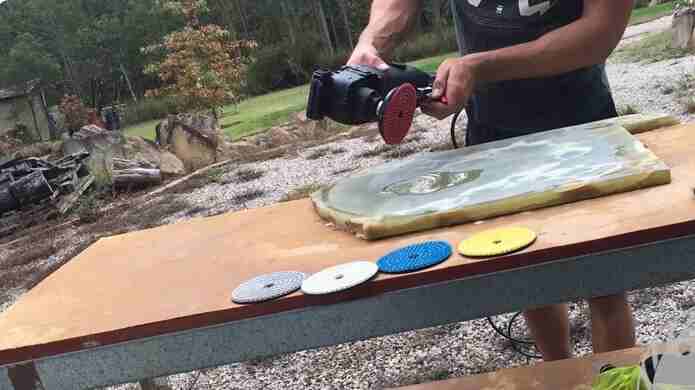
While it may be possible to use regular sandpaper to sand granite, it is not recommended. Granite is a hard and durable stone with low porosity, meaning its surface doesn't easily absorb liquids or dirt.
Regular sandpaper will not provide the same level of protection as diamond-coated tools or professional-grade polishing pads.
The abrasive particles on regular sandpaper are not designed for use on hard surfaces like granite and can cause scratches or damage over time.
For optimal results in achieving a mirror-like shine on your granite countertop, we recommend investing in quality diamond polishing discs and following the manufacturer's instructions closely when installing this type of finish.
Is it possible to refinish granite?
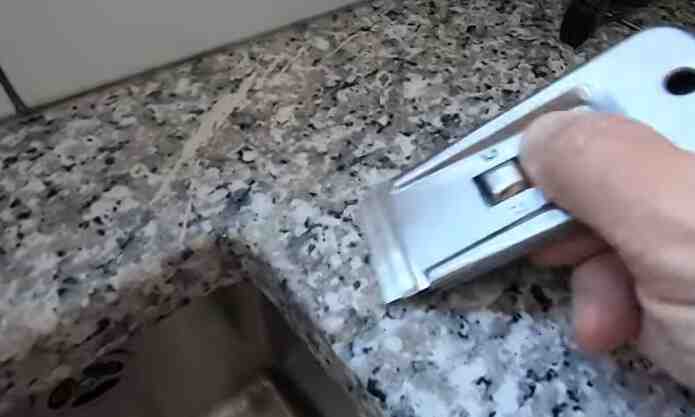
Yes, refinishing granite is possible. The process requires special care due to the nature of granite and its hardness. Depending on the level of wear and tear, polishing or honing may be required.
Polishing is a more aggressive process to brighten dull surfaces and remove minor etchings caused by acidic substances such as vinegar or lemon juice. This process can add shine when desired but will not remove deep scratches or cracks in granite countertops or other surfaces.
Honing, on the other hand, is a gentler process that helps smooth out rough edges and reduce minor imperfections like water spots or light scratches caused by everyday use.
Though refinishing granite can be done DIY-style with specialized kits available online or at home improvement stores, it's recommended that inexperienced users consult an experienced professional for optimal results without causing any damage in the meantime.
What are the precautions that should be taken when sanding granite?
Sanding granite is a delicate task and requires proper safety precautions. First, wearing the right protective gear, such as goggles, dust masks, and gloves, is essential. This will help protect your eyes, lungs, and skin from any particles generated when sanding.
You should use a low-grit sandpaper explicitly designed for hard surfaces like granite; this helps reduce potential scratches or gouges in the stone caused by sanding too harshly with a high-grit paper.
Sand the surface slowly in one direction; never apply pressure, as this could cause more harm than good. After each pass of sandpaper over the surface, wipe away all dust with a damp cloth; this will ensure that it does not accumulate on the piece, which can make future polishing steps more difficult or marred surfaces.
Finally, properly dispose of used sandpaper and any other scrap materials generated when completing the job - failure to do so damages our environment and poses potential health hazards if left unattended around living spaces or work areas.
Final Words
Understanding how to sand granite can help create a smooth, polished finish on the rock. You can achieve a high-quality result with the right tools, abrasives, and techniques. Sanding granite is a process that should be approached with care and attention to detail to produce the best possible outcome.